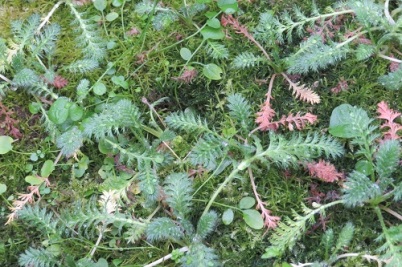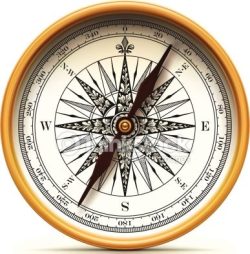Apologies. That is a very deceptive title.
I wish I had enjoyed a quick trip to the snowy Antarctic.
Instead, I stepped through a set of vacuum-sealed doors into the fascinating Subantarctic Plant House at the Royal Tasmanian Botanical Gardens.
I don’t know about you, but when I picture subantarctic anything the last thing I think about is plant life. All I imagine is endless snow, blasting wind and horizontal sleet. But, No.
Located in the south-west Pacific Ocean about half-way between Australia and Antarctica, Macquarie Island is only 34km long and 5km wide, but is considered so important that it has obtained World Heritage Status. If the weather is good, it takes about three days to get there by boat from Hobart, Tasmania.

Hobart has a substantial maritime history and has acted as a stepping off point for Antarctic exploration for over 100 years. It makes sense that the Royal Tasmanian Botanical Gardens (RTBG) should celebrate the State’s Antarctic and Subantarctic connections through plants.
The Subantarctic Plant House (SPH) opened 20 years ago to provide a compact insight into the plant life of Macquarie Island.
From the outside, the SPH looks pretty non-descript. A smooth, white building with slightly curved walls and no windows. No celebration of clever architecture here, but it all makes sense once you get to the front door. The blandness helps to disguise the big reveal as you step through the doors and into a completely different world.
 Not really knowing what to expect as I heaved open the air lock doors, I was hit by freezing winds and the screech and shrieks of birds. Yep, this was no longer a mild Summer morning in Hobart.
Not really knowing what to expect as I heaved open the air lock doors, I was hit by freezing winds and the screech and shrieks of birds. Yep, this was no longer a mild Summer morning in Hobart.
In reality, the SPH is only a small oval room of about 10m x 5m, however it is really well done. The walls are decorated with painted murals depicting the landscape of Macquarie Island and if you blur your eyes a bit, it looks quite lifelike.
 Hunching up and rubbing my arms to keep warm, I briefly closed my eyes and focused on listening to and feeling my surrounds. It was cold, with icy winds funneled into the room via four large holes in the wall. As well as the cold, the air was moist and, reading the digital display, it told me it was 89% humidity. I read that on this island it rains 320 days per year! No doubt all that moisture keeps the Macquarie Island ferns very happy.
Hunching up and rubbing my arms to keep warm, I briefly closed my eyes and focused on listening to and feeling my surrounds. It was cold, with icy winds funneled into the room via four large holes in the wall. As well as the cold, the air was moist and, reading the digital display, it told me it was 89% humidity. I read that on this island it rains 320 days per year! No doubt all that moisture keeps the Macquarie Island ferns very happy.
A wooden boardwalk skirts the room, encouraging you to stick to the path and stay off the fragile plant life. The plants themselves are not impressive to look at. To me the impressive part comes from their resilience and their ability to thrive in such harsh conditions.
For a split second, with my eyes closed and the sound of the screeching birds and various animal grunts and calls, it did feel like I was actually on Macquarie Island. I suspect though it was Macquarie Island on a good day and not in the midst of Winter during an Antarctic squall.
 The SPH features a good range of interpretative information on the flora and fauna of the region and each of the plants are clearly labelled for the serious plant buffs out there.
The SPH features a good range of interpretative information on the flora and fauna of the region and each of the plants are clearly labelled for the serious plant buffs out there.
When I stepped back out into the Summer sunshine it struck me that the role of public gardens has changed dramatically over the years. These sorts of gardens are no longer a simple place of beauty. They are now places of entertainment and education. Surely that means they are far less exclusive and acessible and welcoming to all.
If you fancy yourself as an Antarctic explorer or researcher then a visit to the SPH is a good way to dip your toes into the icy waters to see if it is really for you.
When has a garden educated you?
The Basics
What: The Royal Tasmanian Botanical Gardens currently undertakes research to determine the germination requirements of a variety of Sub Antarctic species, primarily from Macquarie Island, and continues to hold stocks of plant material for cultivation and external research programs. Read more about it here.
 Where: The Subantarctic Plant House is located at the southern edge of the Royal Tasmanian Botanical Gardens, Hobart.
Where: The Subantarctic Plant House is located at the southern edge of the Royal Tasmanian Botanical Gardens, Hobart.
When: I visited pre-Covid19. The Gardens are open seven days from 800am. Closing time depends on the time of year and daylight saving times – either 500pm or 630pm.
Why: To learn about/see something out of the ordinary.
How: The Royal Tasmanian Botanical Gardens are an easy stroll from the Hobart CBD, catch one of the Red Dekker buses or hire a bicycle and hit the bike paths.
Who: Access to the Subantarctic Plant House is via excellent smooth, wide paths. Inside the wooden boardwalks are accessible to prams and wheelchairs. Take care on the boardwalks in the damp conditions as they could be slightly slippery.
 Related Posts: What else is there to see in the Royal Tasmanian Botanical Gardens? Have a read of my summary post here.
Related Posts: What else is there to see in the Royal Tasmanian Botanical Gardens? Have a read of my summary post here.
Related Blogs: For some Macquarie Island inspiration, check out the stunning photos of the Young Adventuress.
Read About It: Feel like a chilly read? Then pick up a copy of South – The Story of Shackleton’s Last Expedition by Ernest Shackleton. A true eye opener. Available from Book Depository.

#hobart #travelinspo #tasmania #royaltasmanianbotanicalgardens #macquarieisland #subantarctic #floraandfauna

How fascinating. I’ve never heard of Macquarie Island. I’m intrigued now. There’s an island to the Nth here called Texel. It’s also UNESCO. Or maybe just the wild sea that surrounds it. I must get a weekend arranged … you’ve inspired me.
LikeLiked by 1 person
I have aspirations to get to the Antarctic one day – perhaps on a small cruise although they are not the best these days!! 😉 I had better get there sooner rather than later as the scientists tell us it is melting fast! What are we doing to our planet?? Happy planning. Mel
LikeLiked by 1 person
Well it looks like you were half way there stopping at Macquarie Island! I was quite amazed by that!
It’s scary. really scary what we’re doing. We are going to need to treat the science of climate change the same way we treat the covid science. More adjustments being made here to tread lighter.
LikeLiked by 1 person
Yes, I think this whole Covid19 kerfuffle has given us all pause for thought…and about time too!
LikeLiked by 2 people
Plants really are amazing. I’m always fascinated to see a tree growing out of a tiny crack (or what once was a tiny crack) in the side of a sheer rock wall. When we are high up hiking a 14er in Colorado it’s also impressive to see what plants (and animals) not only live but thrive up there.
LikeLiked by 2 people
Agreed. They are a subtle nod to the power of Nature. We have a variety of Fig trees over here that manage to grow in the most unlikely of places, sending out tendrils to grip onto whatever they can. Very clever!
LikeLiked by 2 people
It was thinking…wow..didn’t realize there is this type of Vegetation in the Antarctic….love visit Tasmania as well
LikeLiked by 2 people
I can’t speak for Antarctica (yet), but Tassie is defnitely worth a visit when they (and Australia as a whole) open their borders again. There will be an instant international flurry of flights and activity when it is safe! Have a good weekend, Mel
LikeLiked by 1 person